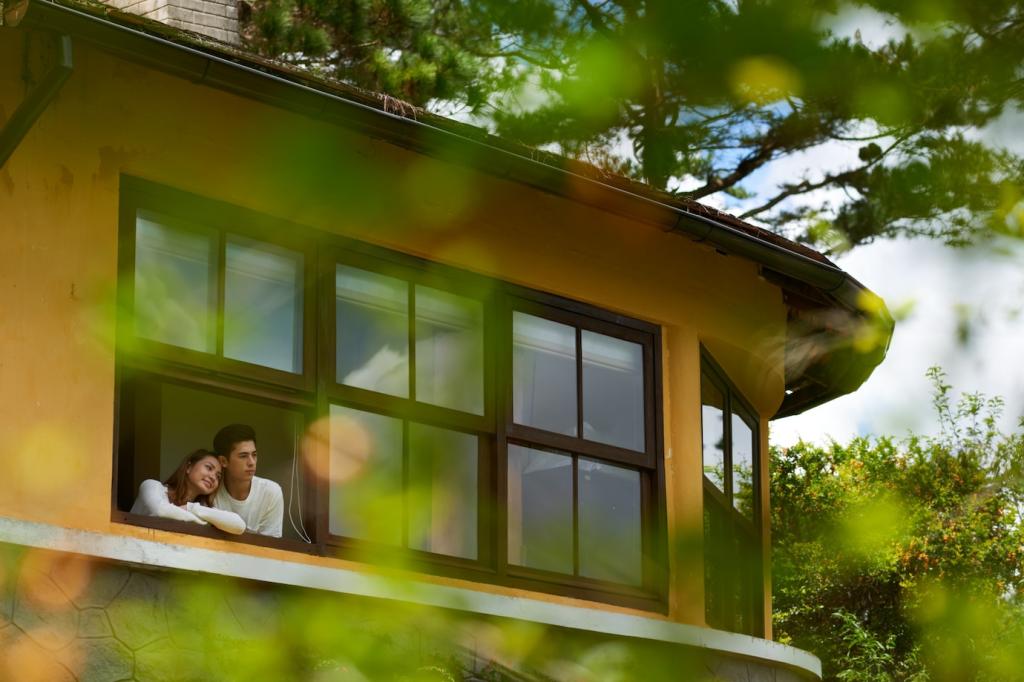
Exploring Renewable Materials for Modern Roofing Solutions
The evolution of modern roofing goes beyond mere aesthetics or structural integrity—it delves into the crucial realm of sustainability. As the construction industry embraces more eco-friendly practices, renewable materials are emerging as pivotal options for innovative roofing solutions. This page delves into the world of renewable roofing materials, unpacking their benefits, challenges, and the future landscape. By understanding the profound impact of these choices, homeowners, architects, and builders alike can make informed decisions that benefit both the environment and their properties.
Understanding Renewable Materials in Roofing
Renewable materials for roofing are derived from sources like plants, fast-growing trees, agricultural byproducts, and certain recyclable organic compounds. Unlike conventional materials such as asphalt shingles, which rely heavily on petroleum-based products, renewables offer a significantly reduced ecological footprint. Incorporating such materials means tapping into a supply chain that nature can replenish, often within years or even months, rather than the centuries needed for fossil-based options. Their adoption signals a commitment not only to green practices but also to the advancement of environmentally responsible architecture.

Types of Renewable Roofing Materials
Bamboo Tiles and Shingles
Bamboo stands out as one of the fastest-growing plants, making it a highly renewable roofing resource. When processed into tiles or shingles, bamboo demonstrates notable strength and flexibility, allowing it to endure various weather conditions. Thanks to advances in treatment technology, bamboo can resist molds, pests, and rot, making it more durable than in the past. Its lightweight nature simplifies installation and reduces the structural load on buildings. As an added bonus, bamboo roofing brings an organic, visually appealing texture that suits both eco-friendly homes and innovative commercial projects.
Reclaimed Wood and Engineered Timber
Opting for reclaimed wood or engineered timber shingles reduces the environmental cost associated with producing new materials. Reclaimed wood repurposes boards from old barns, warehouses, and even wine barrels, giving these materials a second life while preserving mature trees. Engineered timber, often made with fast-growing tree species and byproducts, is treated for enhanced durability and weather resistance. Both options deliver excellent insulation and a timeless appearance, making them popular for restoring historic properties and for new builds that prioritize sustainability alongside classic visual appeal.
Green Roofs with Living Plants
Green roofs go beyond traditional coverings by integrating living vegetation into the roofing structure itself. These systems typically involve layers for water management, plant growth, and root support, creating sustainable ecosystems atop buildings. The plants on green roofs help absorb rainwater, reduce heat island effects, and provide natural insulation, lowering energy costs. With proper design and maintenance, green roofs thrive in diverse climates, offering a visually dynamic and ecologically beneficial solution that exemplifies the innovative potential of renewable materials in modern construction.
Challenges and Solutions in Adopting Renewable Roofing
Addressing Performance and Durability Concerns
One hurdle for renewable roofing materials is the perception that they may not match the longevity or resilience of traditional options. While earlier generations of these materials did have limitations, current advancements in treatments, coatings, and installation techniques have dramatically improved performance. For instance, fire-retardant finishes and pressure treatments now enable wooden and thatched roofs to meet strict safety requirements. As testing protocols evolve and manufacturers invest in research, renewable options will continue to offer lifespans and robustness comparable to or even surpassing standard roofing materials.
Navigating Availability and Skilled Labor Gaps
Sourcing renewable materials in sufficient quantities and at competitive prices can be a challenge, particularly outside urban centers or eco-conscious regions. Additionally, contractors and builders may lack experience or training in the proper installation of these innovative products. Addressing this challenge requires industry-wide education initiatives and strong supplier networks. As demand increases, more professionals are gaining expertise in handling these materials, and supply chains are expanding to meet new requirements. Over time, improved accessibility and skilled labor will further drive adoption rates for renewable roofing solutions.
Balancing Costs with Long-term Value
Although some renewable roofing materials have higher upfront costs compared to conventional options, they often deliver significant savings over time. Enhanced energy efficiency, reduced maintenance, and possible incentives or tax credits bolster their overall value proposition. This requires homeowners, architects, and developers to take a long-term view of property ownership, considering lifecycle costs rather than solely initial expenditures. As government policies and market incentives evolve, the economic case for renewable roofing will likely become even stronger, making it an increasingly attractive investment for the future.
